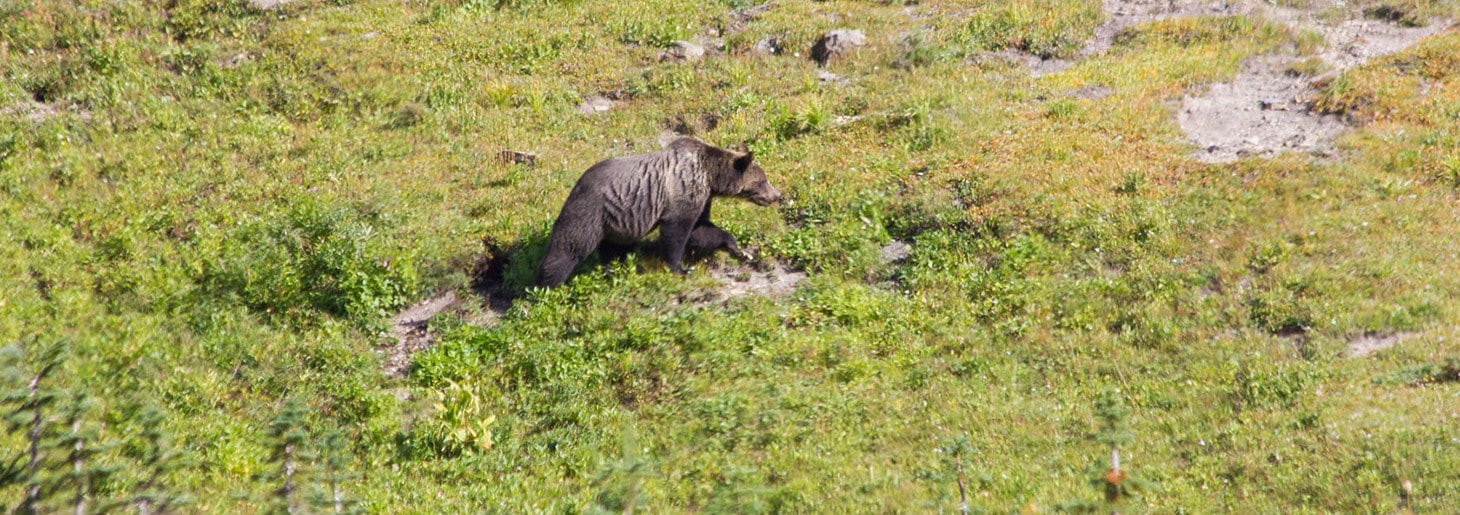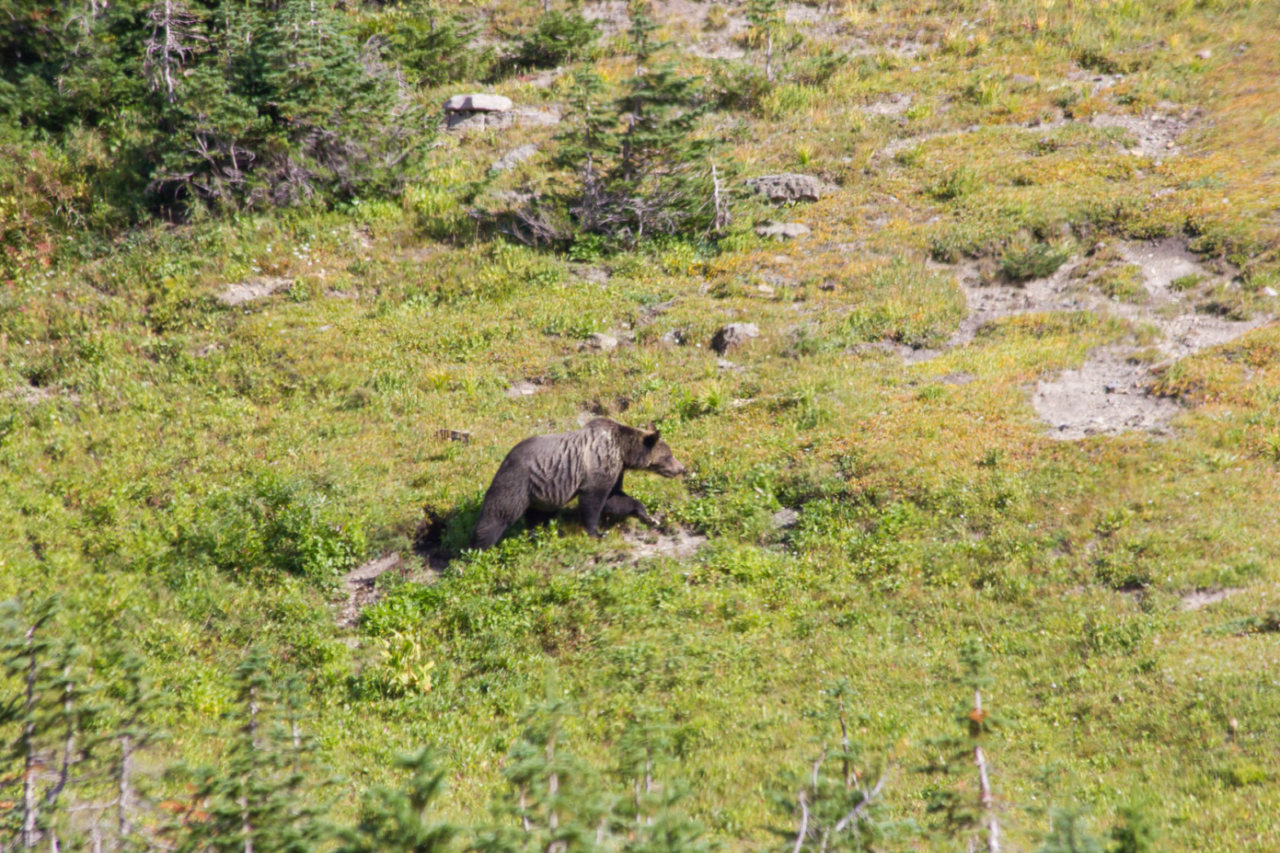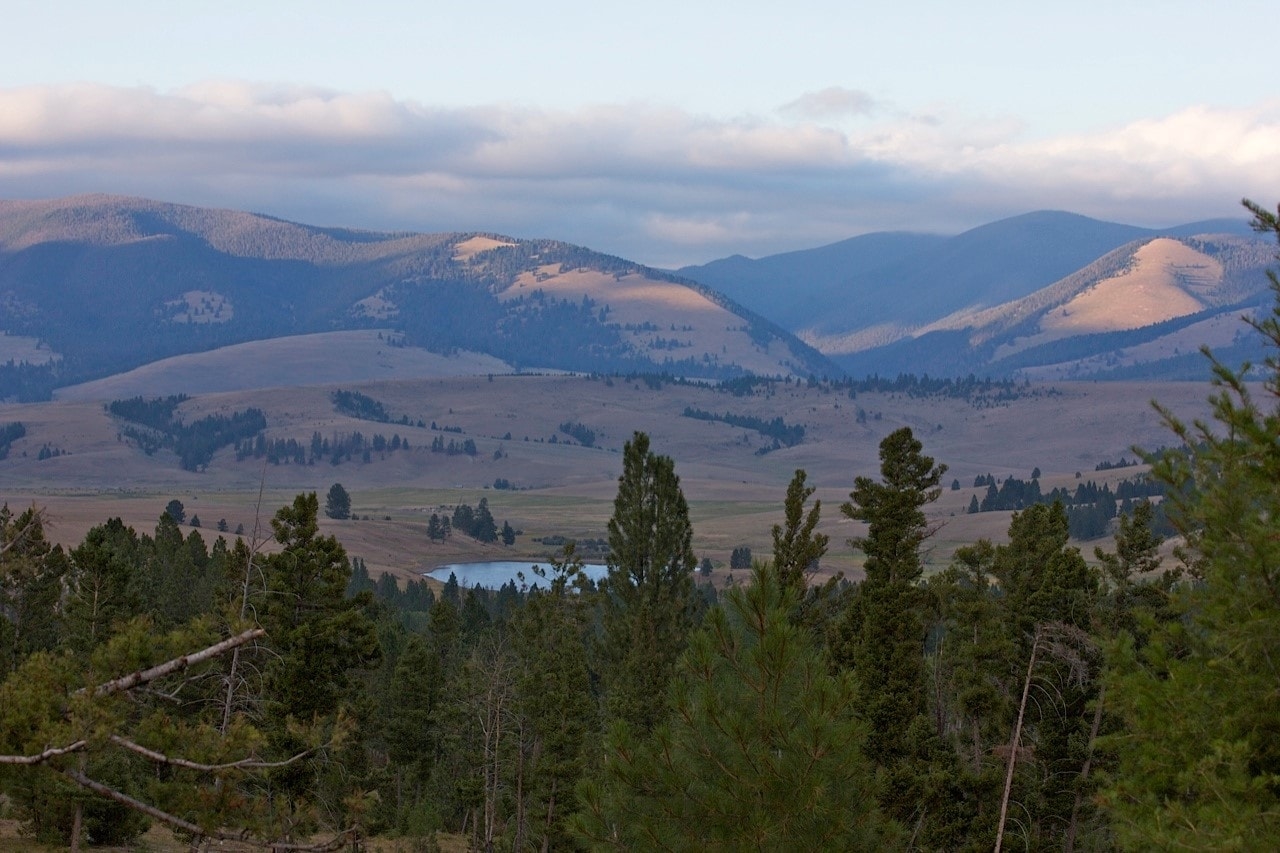Montana’s Migratory Grizzly Bears
By Michael DeShore, Licensed in MT
LITTLE VALLEY RANCH COULD PROVIDE A VITAL GEOGRAPHIC LINK
I recently attended a presentation at the University of Montana regarding the tracking of bears, and the biologist quipped: “Everyone visiting Montana heads to Yellowstone or Glacier with hopes of seeing a grizzly bear in person. If they really want to see a bear, they should just drive to Helmville.”
Montana’s two major populations of grizzly bears have existed independently for years. The northern bears come from the 9,600 square mile Northern Continental Divide Ecosystem, and the southern bears live in the 9,200 square mile Yellowstone Ecosystem. In recent years, many have migrated farther from their core habitat and seem to be re-colonizing their historical lands.
Missoula-based biologist Jamie Jonkel at Montana Fish, Wildlife & Parks has been monitoring these bears for roughly 20 years, and it’s apparent that each year, more bears are traveling a little farther into their native lands. Just last year, one bear made it over to the Belt Mountains, east of Helena; two others were found south and east of Great Falls, and another as far as the Big Hole Valley in Southwest Montana. The biologists radio-collar a few bears annually, which allows them to track the bears’ daily migratory data.
Last year, they tracked a bear named Kyle from the Bob Marshall Wilderness down to Deer Lodge. A few years ago, a now-famous bear named Ethyl logged 2,800 miles over three years from her home near Bigfork all the way to Idaho and back. She was initially caught raiding an apple orchard and relocated to Hungry Horse Reservoir. After a second offense, she was moved to an even more remote area, and that’s when she decided to hit the trail. She trekked through the Bob Marshall Wilderness, over to the Rocky Mountain Front, then westerly through Missoula into Idaho’s Panhandle above Coeur d’Alene. Once Ethyl decided to head back to Montana, she worked her way back to the Bitterroot Mountains, passing right through town in Missoula, then traversed north through the Rattlesnake Wilderness and ended up near Eureka via Glacier National Park. Ethyl’s travels were abnormal, but they show the incredible range these bears are capable of.
(Click on the map below to enlarge)
The Little Valley Ranch lies west of Highway 141 along the eastern edge of the Garnet Range, and across the valley begins the Robert E. Lee Mountain Range. This portion of the Blackfoot watershed has become a stepping stone for migratory bears heading south from Glacier Park and the Bob Marshall Wilderness down into areas around Helena, Butte, and Boulder. The area between Helmville and Avon may someday link the two ecosystems, as some of Yellowstone’s grizzlies are traveling north. Biologists still can’t confirm whether the bears have connected, but welcome the day when they do, as this will bring more genetic diversity to the species and help protect against inbreeding. Let’s hope these intrepid bears keep exploring.
As the bears expand into new territories they will need more protected habitats to survive. If you are interested in learning more about how you can help conserve land for grizzly bears and other wildlife in the northern Rocky Mountains, please visit The Vital Ground Foundation and the Blackfoot Challenge.

Discover the Charm and Opportunities of North Dakota
Are you considering a move but unsure where to settle? North Dakota, often overlooked by travelers and potential residents alike, offers a wealth of opportunities and a lifestyle to suit a variety of preferences. Whether you’re drawn to outdoor adventures, a slower pace of life, or expanding career opportunities, this charming state has something to […]

Easement Dispute – Ask an Agent
Dear Land Expert, I am preparing to list my Western ranch soon; however, my neighbor is currently contesting an easement that crosses a corner of their property, an access route I’ve used consistently and that has been essential for reaching certain parts of my land. While I’ve always understood this to be a valid easement, […]








